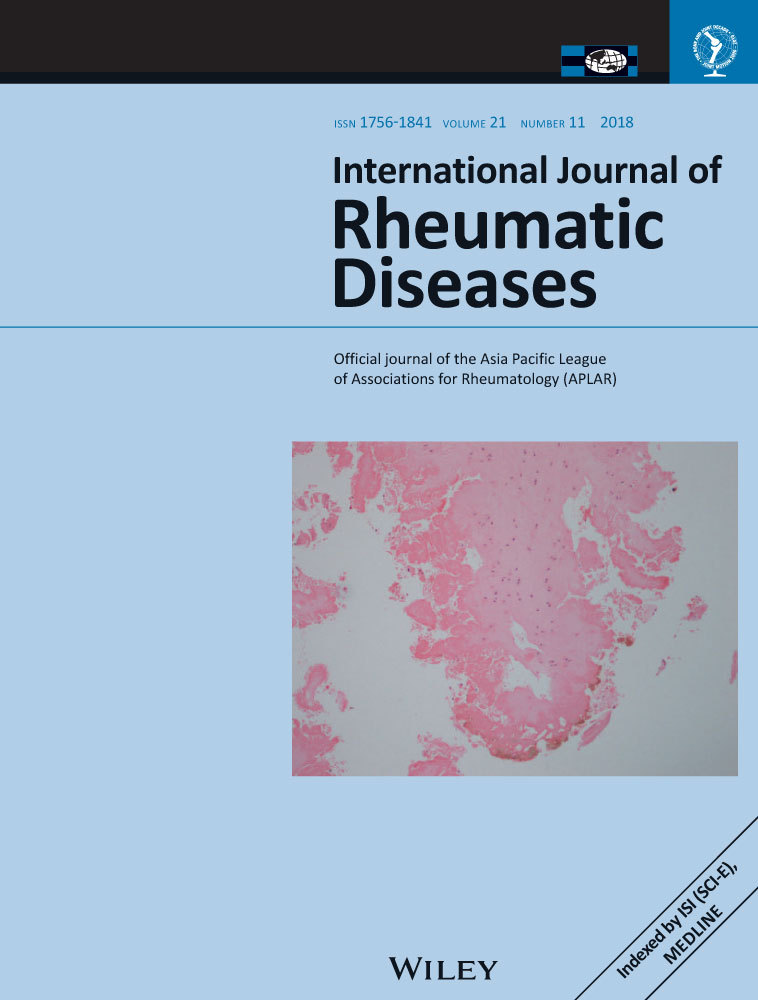Matrix metalloprotease 3 is associated with sarcopenia in rheumatoid arthritis - results from the CHIKARA study
Abstract
Aim
Patients with rheumatoid arthritis (RA) show lower muscle mass and a higher prevalence of sarcopenia than healthy individuals. Correlations between sarcopenia and disease activity, physical function, laboratory data and body composition at baseline were investigated in a prospective, observational study (CHIKARA study) of RA patients.
Methods
Body composition was measured using a bioelectrical impedance analyzer. Parameters were compared between sarcopenia and non-sarcopenia groups, and correlations between sarcopenia and Disease Activity Score of 28 joints – erythrocyte sedimentation rate (DAS28-ESR), modified health assessment questionnaire, treatment, and laboratory data, including matrix metalloproteinase 3 (MMP3), were investigated.
Results
The participants were 100 patients with RA (women, 78%; mean age, 66.1 years). Mean disease duration was 5.5 years, DAS28-ESR was 3.55 and the prevalence of sarcopenia was 28%. Median C-reactive protein (CRP) and MMP3 were significantly higher in the sarcopenia group (0.21 mg/dL and 103.4 ng/mL) than in the non-sarcopenia group (0.11 mg/dL and 70.3 ng/mL). Sarcopenia was negatively correlated with weight, body mass index (BMI), muscle mass, body fat mass, estimated bone mass and basal metabolic rate, and positively correlated with Steinbrocker stage, CRP and MMP3 on univariate analyses. BMI, body fat mass and MMP3 were independently associated with sarcopenia on multivariate logistic regression analysis. When MMP3 was ≥ 90.7 ng/mL, the odds ratio for sarcopenia was increased 3.1-fold compared with < 90.7 ng/mL (P = 0.018).
Conclusion
The prevalence of sarcopenia was 28% in patients with RA whose disease activity was mild. Low BMI, high fat mass and high MMP3 were independently associated with sarcopenia. MMP3 might be a useful marker for sarcopenia in patients with RA.
Conflict of Interest
Masahiro Tada, Yutaro Yamada, Koji Mandai and Noriaki Hidaka declare they have no conflicts of interest.




